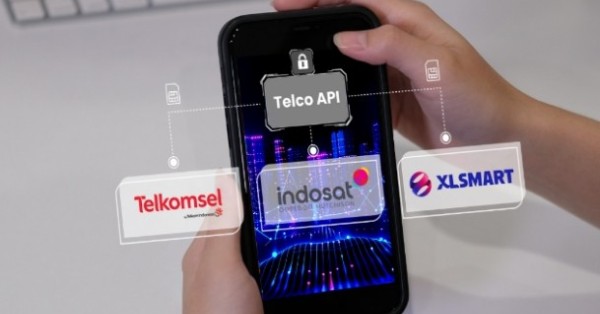Indonesia Telco API Alliance: Key Announcement
Indonesia’s three leading mobile players—Telkomsel, Indosat Ooredoo Hutchison (IOH), and XLSMART—have formed a joint Telco API Alliance to standardize network-exposed APIs and harden the country’s digital ecosystem against fraud.
Unified CAMARA-Based Telco API Standard
The alliance commits all three operators to a common telco API protocol aligned with CAMARA, the open-source, Linux Foundation–hosted API project supported by the GSMA Open Gateway initiative. A harmonized interface means developers can integrate once and reach all participating networks in Indonesia with consistent semantics, security, and documentation, rather than building bespoke connections per operator. The Memorandum of Understanding builds on the operators’ participation in GSMA Open Gateway since February 2024 and places Indonesia within a fast-expanding global movement that, by mid-2025, included dozens of operator groups representing the majority of mobile connections worldwide.
Six Security APIs at Launch
The initial roll-out centers on customer protection and fraud prevention—areas where network signals offer high value. The Telco API Active/Inactive capability confirms if a number is active and properly registered, helping platforms suppress stale or risky identifiers. Mobile Number Verification (MNV) validates device possession through network checks, enabling silent, user-friendly authentication flows without relying on one-time passwords delivered by SMS. SIM Swap detection flags recent SIM changes, a leading indicator of account takeover risk. Device Location verification confirms that a device is within a defined geographic range at the time of a sensitive action. Recycle Number checks help platforms identify a change in number ownership to avoid misdirected communications or unauthorized access. Scam Signal analyzes network intelligence in near real time to flag potentially fraudulent transfers and business transactions for stepped-up verification.
Why Telco APIs Matter for Indonesia’s Digital Economy
The announcement arrives as digital commerce, fintech, and superapps face mounting fraud pressure and regulatory demands for stronger customer authentication and data protection.
Rising Fraud and Account Takeover Risks
Account takeover exploits weaknesses in SMS OTP, social engineering, and recycled numbers. Network-verified signals such as SIM change status, line activity, and device location can materially cut risk at login, payment, and account recovery. Centralizing these signals via standardized APIs lowers integration friction and accelerates adoption across banks, fintechs, e-commerce, ride-hailing, logistics, and government services.
Standardization vs. Bilateral Integrations
Indonesia has multiple nationwide networks, and historically developers faced inconsistent interfaces, latency profiles, and commercial terms. A unified CAMARA-based approach reduces complexity, shortens time-to-market, and enables consistent risk policies across operators. That standardization is critical for national-scale platforms that must deliver a uniform experience to tens of millions of users regardless of their mobile provider.
Strategic Impacts for Operators, Banks, and Platforms
Beyond fraud reduction, the alliance signals a shift toward programmable networks as revenue-generating platforms and a new phase of collaboration between telcos and digital businesses.
For Operators: From Connectivity to Programmable Networks
Exposing network capabilities through standardized APIs enables new B2B2C revenue lines and tighter partnerships with banks, fintechs, and enterprises. Operators that can guarantee API consistency, latency SLAs, and robust developer support will differentiate while also creating a basis for future services such as on-demand quality, edge exposure, and device profiling—again via CAMARA.
For Banks and Fintechs: Stronger KYC and SCA
Network-verified checks strengthen Know Your Customer (KYC) and Strong Customer Authentication (SCA) without sacrificing conversion. SIM Swap and Recycle Number reduce takeover risk, MNV improves login and step-up flows, and Device Location aids transaction scoring, courier handoffs, and high-value deliveries. Scam Signal can serve as an early-warning layer that triggers limits or manual review on suspicious transfers.
For Developers: Faster Time-to-Market with Open Gateway
Developers benefit from a consistent API catalog, documentation, and security model across operators. Aligning with CAMARA reduces maintenance overhead and enables multi-operator deployments, simplifying national rollouts and enabling cross-border expansion as more markets converge on Open Gateway standards.
Technical Requirements and Governance for Telco APIs
Enterprises should plan for secure-by-design integrations that respect privacy, ensure reliability, and minimize data exposure.
Privacy, Consent, and Indonesia PDP Law Compliance
Indonesia’s personal data protection regime heightens requirements for lawful basis, consent, purpose limitation, and data minimization. Use only the signals necessary for each risk decision, document retention policies, and ensure transparent user notices. Align contractually on roles and responsibilities for data processing with each operator.
Security and Reliability Expectations
Adopt OAuth 2.0–based authorization, mutual TLS, and key rotation aligned with operator guidelines. Implement throttling, circuit breakers, and graceful degradation to preserve user experience during network incidents. Demand clear SLAs on availability, latency, and incident reporting, and validate them through pre-production testing and chaos drills.
Data Minimization and Risk Scoring Patterns
Favor binary or risk-scored responses over raw data where possible. Combine network signals with device telemetry and behavioral analytics to reduce false positives. Instrument measurement across the funnel—conversion, step-up rates, fraud loss, and customer support burden—to optimize policy thresholds.
Telco API Adoption Playbook: Next Steps
Prioritize high-impact, low-friction use cases, then scale with shared metrics and cross-functional governance.
Prioritize High-Impact Use Cases
Start with SIM Swap checks at account recovery and high-value payouts, MNV for silent login and payment authentication, and Recycle Number for periodic KYC refresh. Layer Device Location for delivery confirmation and in-branch or in-store journeys. Pilot Scam Signal on wire transfers and marketplace disbursements.
Architecture and Integration Tips
Abstract operator-specific details behind an internal risk API to future-proof against changes. Build a policy engine to tailor actions by risk tier and user segment. Use feature flags to A/B test network checks versus existing controls and to tune thresholds by channel and transaction type.
Commercial and Operational Due Diligence
Negotiate transparent pricing per API call, explore volume tiers, and align on data residency. Confirm developer sandbox availability, monitoring hooks, and incident playbooks. Establish a joint roadmap cadence with the operators for API enhancements and new capabilities.
Telco API Trends to Watch in 2025–2026
The alliance lays groundwork for broader API monetization and cross-market standardization across Asia Pacific.
Expansion Beyond Security APIs
Expect continued CAMARA adoption into areas such as device status, number verification variants, quality-on-demand, and edge exposure—opening use cases in gaming, video, and industrial IoT with measurable QoE benefits.
Regional Alignment and Roaming Use Cases
As more ASEAN operators standardize on Open Gateway, developers will push for parity across roaming and cross-border transactions. Harmonized APIs and policies can reduce friction for regional superapps and payment networks.
Outcome Transparency and Shared Benchmarks
Stakeholders will look for evidence: fraud loss reduction, OTP dependency decreases, improved conversion, and lower customer support costs. Publishing reference metrics and case studies will accelerate adoption and help refine risk policies nationwide.








































